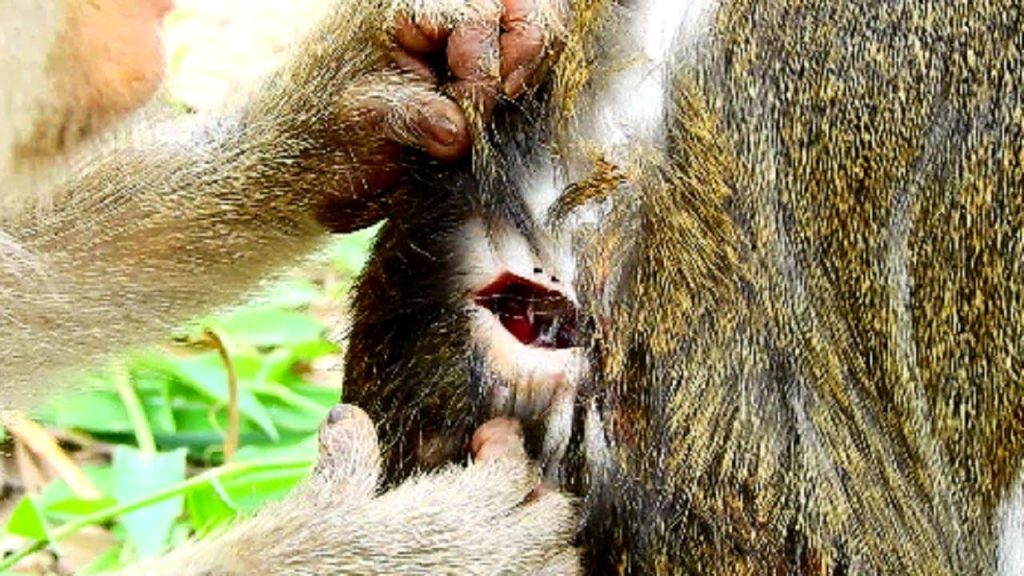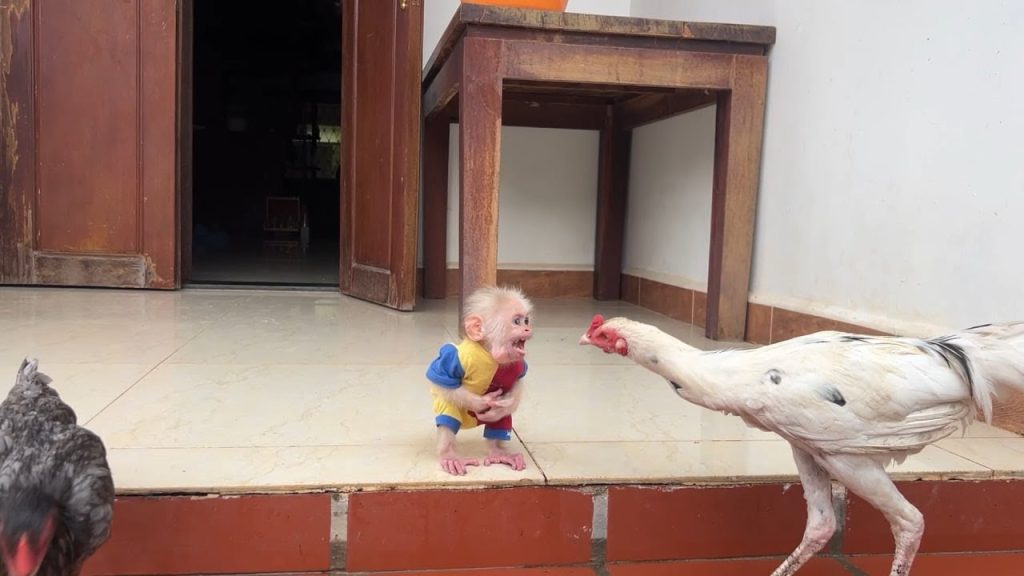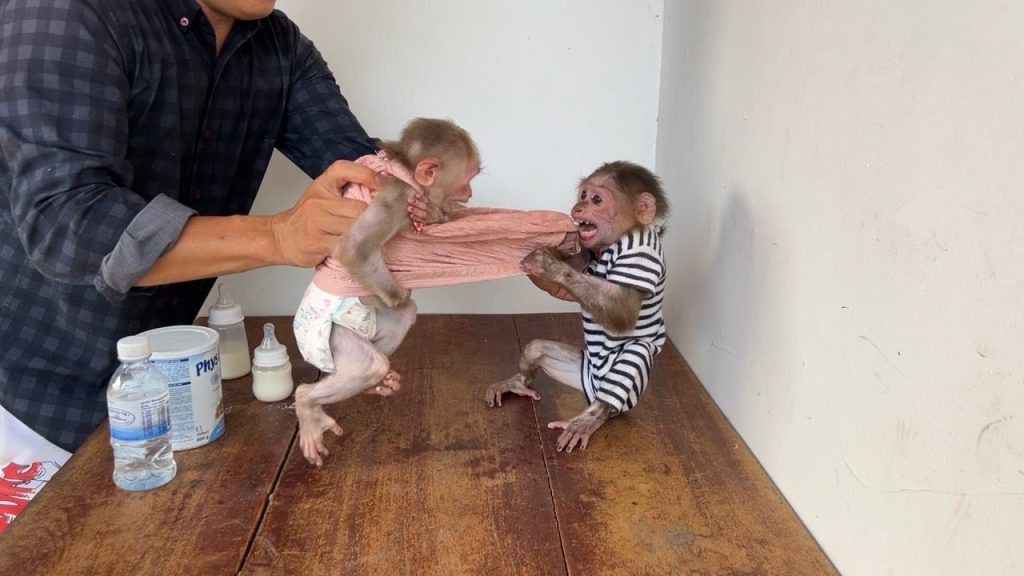
In the heart of the monkey troop, each member has a role to play, whether it is protecting the young, finding food, or providing comfort to those in distress. Among them, Ereza has often been seen as a calm and wise figure, admired for her gentle ways. When Rolls Royce suffered a serious wound, many feared the injury might bring unbearable pain and difficulty. Yet, Ereza stepped forward like a doctor in the wild, offering care and attention that brought comfort to the suffering monkey.
The wound Rolls Royce carried was severe, leaving him weak and restless. Every movement seemed to bring him pain, and his body language reflected his discomfort. Monkeys, like humans, are vulnerable in such moments; an injury not only causes physical harm but also makes them more open to danger within the group and from predators outside. For Rolls Royce, the pain was overwhelming, and his cries echoed with desperation.
It was Ereza who approached with steady care. Observers often call her the “doctor” of the troop because of her way of handling others in pain. She examined Rolls Royce with patience, moving carefully so as not to worsen the wound. With her gentle touch, she began to clean the injured area, licking softly to remove dirt and reduce the irritation. Though it might seem simple, this grooming behavior plays a crucial role in monkey health, keeping wounds clean and offering relief.
What made the scene remarkable was Ereza’s deep sense of empathy. She did not rush or act with force. Instead, she moved slowly, pausing whenever Rolls Royce winced, as if she understood the pain he was going through. Her presence alone provided reassurance. Rolls Royce, though clearly in pain, allowed Ereza to continue, trusting her more than anyone else in that moment.
Other troop members gathered nearby, some watching with concern, others continuing with their daily activities. Yet it was clear that Ereza’s act stood out as extraordinary. She became a symbol of hope, proving that care and compassion can shine even in the harshest environments of the wild.
The bond formed during such moments goes beyond survival. Ereza’s gentle care showed the importance of trust and compassion in a community. For Rolls Royce, the treatment was not just about cleaning a wound but also about finding comfort in a friend’s presence. His breathing slowed, his cries softened, and though the pain remained, the burden seemed lighter with Ereza by his side.
This story reminds us of the healing power of kindness. Even without medicines, tools, or human knowledge, Ereza played the role of a healer, showing that empathy is not limited to people alone. Animals, too, can comfort, care, and heal one another in ways that touch the heart.
Rolls Royce’s painful wound became a moment to witness the greatness of compassion. Ereza, the troop’s “doctor,” proved once again that in times of suffering, love and care can be the strongest medicine of all.


